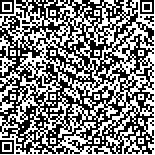| Author Name | Affiliation | | Wei Xiao | School of Marmine Science and Technology, Harbin Institute of Technology,Weihai 264209, Shandong, China
College of Life Science and Engineering,Southwest University of Science and Technology,Mianyang 621010,Sichuan,China | | Peisheng Yan | School of Marmine Science and Technology, Harbin Institute of Technology,Weihai 264209, Shandong, China |
|
| Abstract: |
| Ecological prevention and control of plant disease is very important in sustainable agriculture. Adjusting soil pH value and fertilizing organic microbial fertilizer are two effective measures in this process. Kelp residue contains a large amount of organic compounds and alkaline metal ions. The bio-control Bacillus amyloliquefaciens strain Hitwh-BA2 was inoculated into kelp residue medium to produce kelp residue microbial fertilizer. Acidic soil and alkaline soil were used to study the effect of kelp residue microbial fertilizer on soil pH and soil suppressive activity. Tip-culture method was used to determine soil leachate suppressive activity, which characterized the soil suppressive activity. Results showed that fertilizing kelp residue microbial fertilizer had increased the soil pH and soil suppressive ability significantly, which was verified by peanut validation experiments as well. Peanut potting experiments proved that fertilizing kelp residue microbial fertilizer not only improved the yield of peanuts obviously, but also reduced the amount of Aspergillus parasiticus 95 in peanut geocarposphere soil significantly. Results also showed that fertilizing kelp residue microbial fertilizer was effective in reducing A. parasiticus 95 infection rate. So the kelp residue microbial fertilizer has good potential application prospect on ecological prevention and control of plant disease. |
| Key words: kelp residue microbial fertilizer soil pH soil suppressive activity ecological prevention and control |
| DOI:10.11916/j.issn.1005-9113.2016.05.011 |
| Clc Number:S156.2 |
| Fund: |






